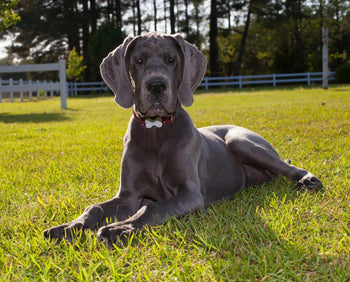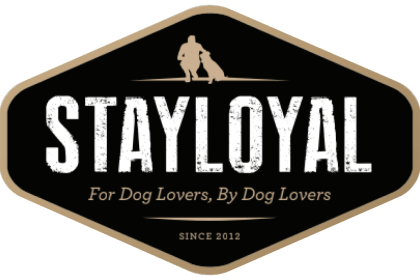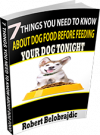Is Your Large or Giant Breed Puppy Getting TOO Much CALCIUM?

We all know that calcium is important for bone growth and so it’s natural to think, bigger puppy, bigger bones must need more calcium! And it’s true. Too little calcium can cause serious issues in your large or giant breed puppy. BUT remember that old saying, “Too much of a good thing…?” Too much calcium (along with phosphorus and fats) can have adverse effects on large or giant breed puppies.
Large or giant breeds are any dog that will get over 25kg when they reach maturity. Unlike their smaller counterparts, these breeds:
GROW FASTER
REMAIN PUPPIES LONGER
These two reasons affect their nutritional needs and can cause problems if they are not fed correctly. Calcium is a leading culprit.
There are 3 proven causes of Hip and Elbow DYSPLASIA IN DOGS:
1. Genetics (which you can’t do anything about, except for choosing your breeder carefully and even then, there’s some chance)
2. Overfeeding
3. EXCESSIVE CALCIUM
A common misconception is that too much protein in a large breed puppy’s food will cause bone issues. However, this was actually disproved in 1991 by RC Nap and a group of researchers. They studied the effect of different diets on the skeletal development of Great Dane puppies. The published findings “Growth and Skeletal Development in Great Dane Pups Fed Different Levels of Protein Intake,” showed no difference between the puppies fed a high protein, normal protein or even low protein diet.
Another study of Great Danes in Germany in 1995 showed that free feeding these puppies greatly increased the risks of skeletal disease. In addition several studies, have shown an excessive amount of calcium will have the same affect.
WHY?
Because puppies (under the age of six months especially) cannot regulate how much calcium is absorbed in their intestinal tracts like adult dogs can. Extra calcium absorption leads to rapid bone growth, which increases the risk of joint disease and hypertrophic osteodystrophy (HOD). Other issues may include compromised blood supply in the bones and a decrease of new bone growth.
HOD mentioned above will show symptoms of painful, swollen joints and growth plates in the leg bones. Your puppy may be lame, show an unwillingness to move, lethargy, and not want to eat. They may also run a high fever (up to 41 degrees C).
Unfortunately, guidelines when it comes to dog food are murky and while for large breed puppies governing bodies give suggested minimum and maximum for calcium in their food, they are not regulated. This means dog food companies do not need to follow these guidelines and on most bags of food, you will only see a MINIMUM listed, not a maximum. Stay Loyal Large Breed Puppy has a maximum calcium level printed on the bag that we follow to reduce the risk of your puppy developing bone issues as he grows.
A Final WARNING: Switching your large/giant breed puppy over to an adult formula too soon can result in too much calcium as well! Large breed puppies should stay on puppy food for longer than regular breeds – between 12-24 months for most large breeds. Your vet can help you determine when it’s safe to make the switch by looking at your pup’s growth plates.
So How Much Calcium, Phosphorus and Fat?
Here are the recommended levels of calcium, phosphorus and fat by the Great Dane community, these are the result of researching many studies on large breed dogs.
• Calcium 1.1% to 1.3%
• Phosphorus 0.8% to 1.0%
• Fat 12% to 14%
The best thing to do is make sure you are feeding your large breed puppy food that is appropriate for his age and future adult size AND that you have read the label carefully. If the food does not list a maximum calcium, it’s best to not risk feeding that food. You can check out the Stay Loyal Large Breed Puppy formula here.
Resources: Source for 1991 Study: https://www.ncbi.nlm.nih.gov/pubmed/1941203
Source for AAFCO standards: http://www.aafco.org/Portals/0/SiteContent/Regulatory/Committees/PetFood/Reports/Pet_Food_Report_2013_Midyear-Proposed_Revisions_to_AAFCO_Nutrient_Profiles.pdf








